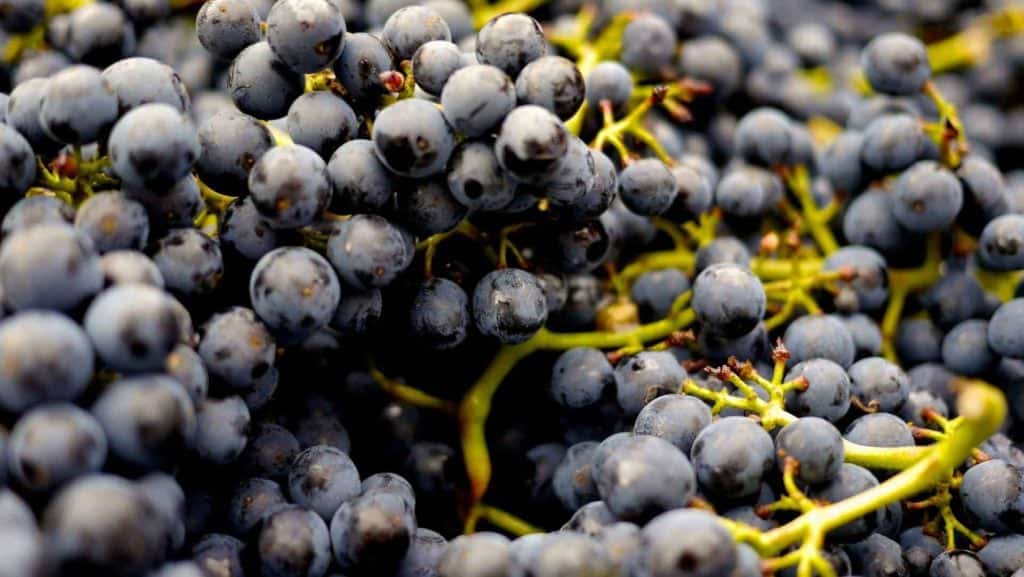While that seems to make sense – and avoiding sulfites is currently in the spotlight – the rush to drive sulfites to zero might be premature.
Let’s take an in-depth look at the low sulfite trend and examine any tradeoffs we might be missing.
Come with me, and we’ll cover the ins and outs – and the tastes and smells – of low sulfite wines.

Wine and Sulfites
To start, let’s lay out what a sulfite is – simply put, sulfites are sulfur-containing compounds that act as preservatives and antimicrobials.
Sulfite is a general term that encompasses various sulfur compounds – things such as sodium sulfite, sodium bisulfite, and more. Sulfur dioxide – a gas often found in and around the winemaking process – isn’t technically a sulfite, but is often lumped in with the category as well.
Although they are one of the bogeymen of wine (up there with tannins), sulfites are oft-misunderstood and do more for your glass than you might think.
What Do Sulfites Do In – and For – Wine?
Sulfites are used as both a means to preserve food and as a flavor enhancer. When it comes to wine, sulfites have many useful qualities.
One thing sulfites do in wine is to prevent the browning process. In turn, this will help preserve the flavor and the color of a wine.
Sulfites also help prevent a wine from spoiling as they hinder bacteria growth. As you’ll see later in this post, they also prevent the overgrowth of certain yeasts, which affects the smell and taste of a finished wine.
Added Sulfites in Wine, Labeling Laws, and Organic Wine
Wine may not be that high in sulfite content – until sulfites are added during the fermentation process, depending on a winemaker’s personal preference.
Once you factor in added sulfites, wine may instead have a heavy concentration – even levels over 100 parts per million. Without any added sulfites, the concentration can be far lower: think around ten parts per million or so.
In the European Union, sulfite labeling laws are in a bit of flux. Currently, the EU requires wine [PDF] to add a “contains sulfites” or “contains sulphites” label when levels exceed 10 mg/liter. In the US, according to the FDA, any food that contains more than ten parts per million sulfite concentration must be properly labeled contains sulfites.
If you aren’t too thrilled about sulfites (even after this post) or if you have an allergy or sensitivity, there are organic wines you can seek out – these tend to be far lower in sulfites. In the EU, these wines are made from organic yeast and grapes, and also have lower sulfites in finished wine than standard wines of that type.
The US splits organic wines into two classes: “made with organic grapes,” which only has to use organic grapes and keep sulfites under 100 ppm (including added sulfites).
More strict “organic wine” labeling requires no added sulfites and a certified process – if you find yourself in the US while avoiding sulfites, note the more stringent standards for the organic wine label.

Sulfites in Red, White, Sparkling Wines
The amount of sulfites in red, white, or sparkling wines depends on the wines themselves. As a general rule, drier red wines usually have lower sulfite content when compared to sweeter white wines.
Generally, the more sugar in the wine, the more sulfites will result. Additionally, with some white wines, winemakers interrupt the process before all the residual sugar is consumed – that remaining sugar attracts bacteria, and later sulfites. Additionally, tannins can also act as a preservative in wine, obviating the need for some added sulfites.
When it comes to sparkling wine, it often has a lower level of sulfites versus reds and whites. Sparkling wine requires a lot of carbonation to create that bubbly effect, and the fermentation of the sugar requires yeast. Too many sulfites would overpower the yeast, so many sparkling wines have fewer added sulfites than other wines (but always research if you’re sensitive).
Are Sulfites Behind Your Wine Headache?
One of the biggest concerns many people have about wine is the potential headache factor. There is an ongoing debate about what causes wine headaches, and many people unfairly point the finger at sulfites.
It’s true – some people do indeed have an allergy or sensitivity to sulfites. That number is perhaps on the order of 1-2% of the population. Many of those allergies seem to be linked to asthma – if you have asthma, you may want to pay close attention to the sulfite content of your food.
When it comes to headaches after wine drinking, there has been substantial research that points the finger toward histamines instead. Histamines are found in wine as well, and they’re known to trigger breathing reactions, flushing, and headaches in sufficient quantities.
Low Sulfite Wines
Now that you know some of the background on sulfites and sulfites in wines let’s turn our attention to low sulfite wines.
Are Sulfite-Free Wines Possible?
Wines that are entirely free of sulfites are impossible – sulfites are a natural byproduct of the fermentation process. Even with strictly controlled processes, you are bound to get some level of sulfites in a finished wine.
Generally, though, there are some extremely low-sulfite varieties of wine. You can find wines that have a low level of sulfites due to their variety, region, or fermentation process – and especially if they have no sulfites added.
Difference in Taste of Low Sulfite Wines
Here’s the good news: many people seem to enjoy low sulfite wines interchangeably with wines that add (or have) more sulfites.
There doesn’t appear to be any drastic difference in taste, but it may be more of a personal preference as sulfites might enhance flavor and aroma.
Let me hedge here – that mostly applies to casual drinkers. If you’re an oenophile, you’ll inevitably pick up some differences. As I mentioned, sulfites change the mixture of yeasts and bacteria involved in the trip from vine to table, and you’d pick up on the flavor differences. Sulfites might also directly add some bitter characteristics, as well.
Wine Faults and Risk of Mousiness
There are many different common wine faults, but mousiness – literally, smell or taste of a “mouse cage” – is a significant wine fault that winemakers dread. It’s known to be a microbiological fault caused by particular yeasts that crop up in wine (perhaps in the absence of sulfites).
Mousiness can occur randomly in wines that have low sulfite content. This seems to happen more in red wines, in particular wines that don’t have as much natural sulfite in them due to their fermentation process and starting sugar content.
It’s not something readily detected while bottling, unfortunately. You might even miss it after uncorking and taking that first drink – mousiness usually takes a few seconds for a sickly taste to hit.
Unfortunately, adding sulfites seems to be one of the best ways to prevent mousiness (or at least reduce the chance of it happening). The connection is noted due to the higher rate of mousiness as more people are opting for low sulfite or organic wines.
Other Challenges with Low Sulfite Wines
Since low sulfite wines aim to keep the sulfite count low, there is a lot of care that needs to go into the entire low sulfite winemaking process.
It can be a challenge to keep the fermentation process clean, as that’s when sulfites naturally develop in the wine. Having a healthy vineyard can help with that, as can using organically farmed grapes as their sulfite content is lower already.
As for the aroma, you may or may not detect a smell when opening a low sulfite wine. This is because there is usually more yeast and bacteria found in these wines compared to their higher sulfite cousins. It’s another critical challenge for low sulfite winemakers, as some people choose their wine based on smell.
A final challenge deals with oxidation. Oxidation itself is a problem regardless of the kind of wine you’re trying to make as it can ruin its shelf life.
Added sulfites can help slow the oxidation process, improving how long a wine remains fresh. On the other hand, low sulfite wines run the risk of having oxidation occur faster – to be safe, drink up!

Enjoying Lower Sulfite Wines
The taste, aroma, and shelf life may be different in low sulfite wines, but these wines are, of course, quite enjoyable.
Naturally Lower-Sulfite Wines
There are some simple ways you can discover naturally low sulfite wines.
For one, keep an eye out for any organically labeled wines you like – as you saw in my labeling section, these wines have fewer sulfites. Additionally, you’re only getting sulfites naturally in the wine with these. There are none added.
Of course – as you well know, more and more wines are explicitly low sulfite. Winemakers might set up everything from clean rooms to tightly controlled vines – watch for these varieties, and try a few brands (and years!) to get a feel for what’s out there. While that might stretch your definition of “natural” due to the tightly controlled environment, these wines generally have fewer additives, so they should fit most of your criteria.
Shelf Life of Low Sulfite Wines
Already bought some low sulfite wine? Awesome!
When previously discussing challenges in low sulfite wine, I mentioned the potential issue with oxidation. This process can cut down the shelf life of low sulfite wines compared to their counterparts.
Of course, other things come into play when determining shelf life, such as how the wine is made, how it’s bottled, and how it’s stored.
To be safe – store your wine away from sunlight and preferably in a dark and colder place. Also, if you do open the bottle, try to recork or otherwise seal it up again with haste when finished.
Or, hey, drink it quickly – and that’s advice I can only give with a smile.
Conclusion: Is it Worth Seeking Out Low-Sulfite Wines?
So, is this growing popularity of organic wine and low sulfite wine worth it?
It’s a mixed bag, as you can see.
Generally, higher sulfite wines aren’t as bad as they’re rumored. Unless you’re sensitive or allergic to sulfites, you don’t have to give these wines too wide a berth.
High sulfites are found in many foods that you may often already consume: processed vegetables, some snack foods, condiments, dried fruit, and more.
So, in many cases, this will come down to personal preferences. Try a few bottles of each and let me know what you think, and if you can notice any differences. (On different nights!)
But overall, it’s an exciting trend – I’m looking forward to all the innovations winemakers come up with, whether they finish with low sulfite wines or high — cheers to that.
FAQ for Low Sulfite Wines
These FAQs cover basic aspects of low sulfite wines, aiming to help consumers make informed choices.
Low sulfite wines are wines that contain a lower amount of sulfites compared to conventional wines. Sulfites are chemicals, primarily sulfur dioxide, that are naturally occurring or added to wine as a preservative to prevent oxidation and maintain freshness. Low sulfite wines either do not have any added sulfites or have sulfites added in minimal quantities.
Some individuals are sensitive or allergic to sulfites, experiencing symptoms such as headaches, hives, or respiratory problems. These individuals may choose low sulfite wines to avoid these adverse reactions. Others might prefer them as a part of a more natural or health-conscious diet.
Low sulfite wines are made by limiting the amount of sulfites added during the winemaking process. This requires meticulous hygiene throughout the winemaking process to avoid contamination and spoilage. Winemakers might also use alternative methods such as using naturally resistant grape varieties, employing natural yeasts, and relying on other forms of preservation like vacuum sealing.
The taste of low sulfite wines can vary; however, without the preservative effects of sulfites, these wines may exhibit a more robust and varied range of flavors and aromas. They might also taste more ‘natural’ or ‘rustic’ compared to conventional wines. The lack of sulfites can sometimes lead to faster aging and evolution of the wine when opened.
Low sulfite wines are more susceptible to oxidation and spoilage because they lack the protective effects of higher sulfite levels. It is important to store them in a cool, dark place and consume them relatively quickly after opening. Ideally, these wines should be stored at a constant temperature and served slightly chilled to enhance their qualities.



